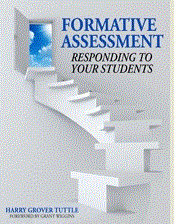Many students need help in developing critical thinking skills as part of the 21st century skills. A technique that I have used both when I taught Critical Thinking courses at the college level and when I have taught higher level thinking in my own Spanish or English classes is Fact-Inference- Judgment.
Look at this picture taken by me in Costa Rica:
Fact – something that is obviously (physically) in the picture, text, movie, etc. Everyone will agree to this fact. For example, there are four people in the picture. There are pigeons.
Inference- based on noticing things in the picture, text, movie, etc., a person makes an assumption. This assumption is only a short logical step from the observation. A person can state what he/she observed and what inference this lead to. Others can easily understand the logic of going directly from the observation to the inference. Inference making people use statements like “Based on observing… I notice … I see and therefore …). For example, I notice that they have on short sleeves so I infer it is warm. It looks like there are young children, a young adult and an older adult, I assume that this is a grandmother, a daughter and her children.
A judgment is a value statement or emotional statement. Although something in the picture or text may be a springboard, there is no logical leap. Judgments take a strong value or emotional stand on the media. Judgments usually express their viewpoint through opinion-based adjectives (“handsome”, “unsafe”) , adverbs (“dangerously”, “peacefully”), verbs (“kill”, “love”) and nouns (“murderer”, “saint” ). A judgment can be easily challenged by others. Some judgments for this picture are “The family is happy” (Not really, the little boy began to cry as the mother moved the pigeon closer to her son.” A fact is that the two older women are smiling. ) and “Costa Rica is overrun by pigeons.” (Fact: Pigeons are in some city parks.)
As we help students to give only facts and inferences about media, we develop their critical thinking. As we help students to see that some statements are judgments (pure opinion not based on facts or inferences), we develop more critical thinkers.
My book, Formative Assessment: Responding to Your Students, is available through Eye on Education.
Also, my book, Successful Student Writing Through Formative Assessment, is available through Eye on Education.


